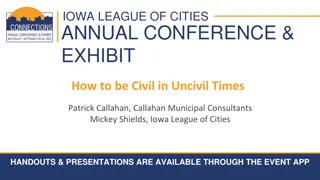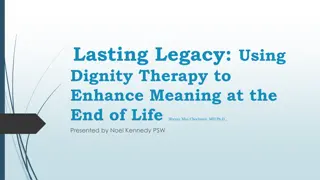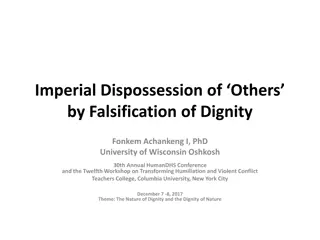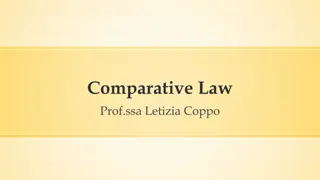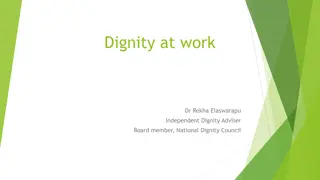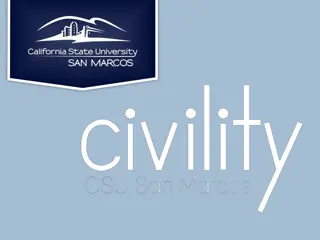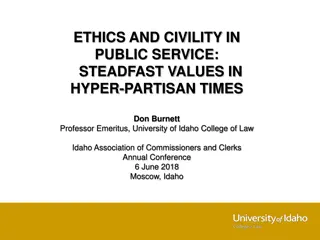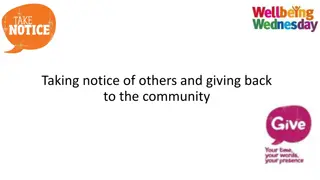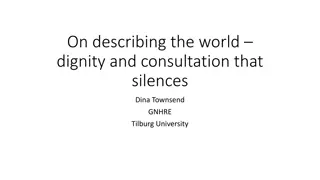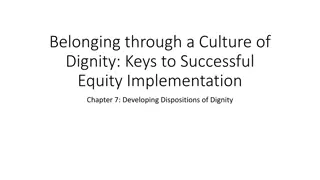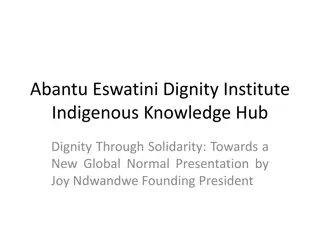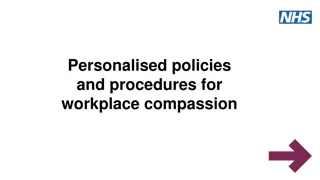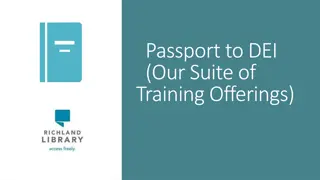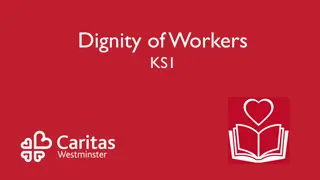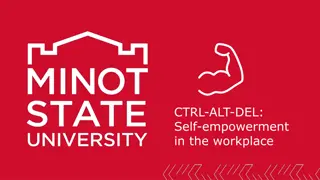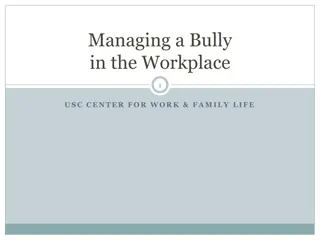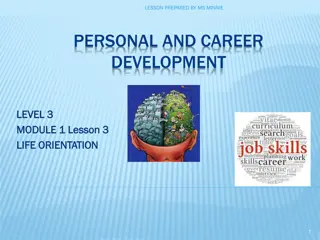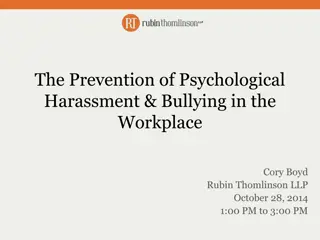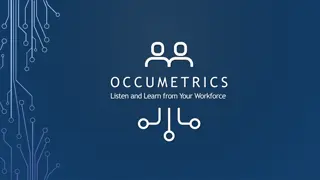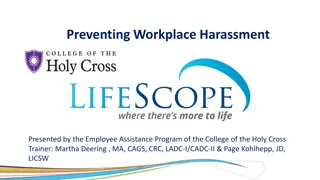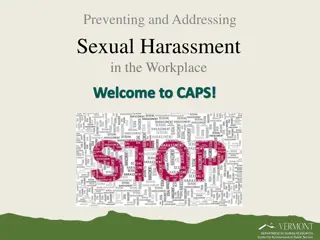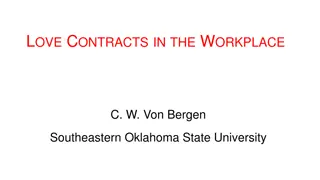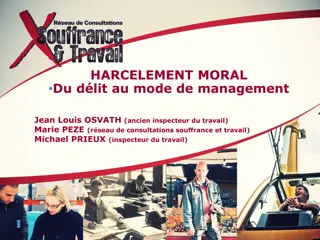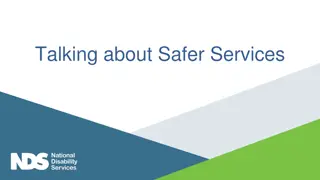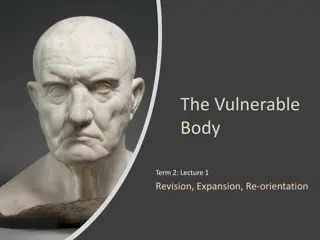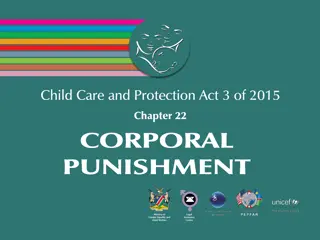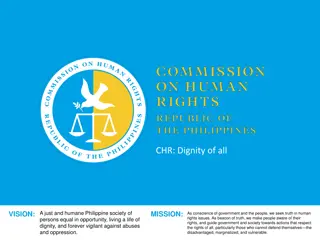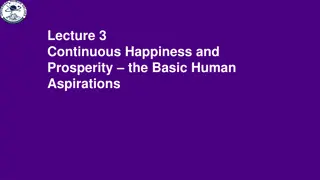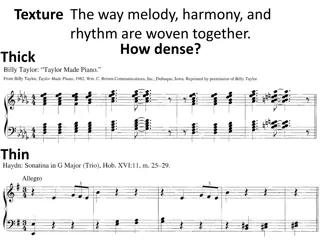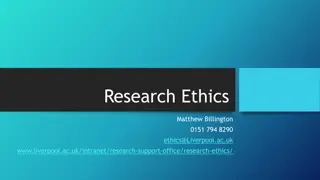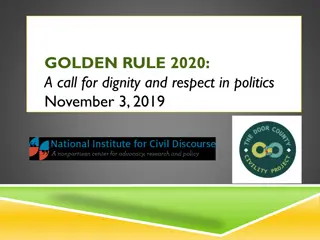Enhancing Workplace Harmony through Acknowledging Dignity and Civility
Welcome to the 2020 Leadership Dialogue focusing on acknowledging dignity through civility for a more harmonious workplace. Civility emphasizes dignity acknowledgment in the workplace, fostering effective feedback exchange for a better understanding of actions' consequences. This session encourages participation, questions, and discussions to promote a respectful work environment through civility principles and guidance provided by various resources.
- Workplace Harmony
- Dignity Acknowledgment
- Civility Promotion
- Effective Communication
- Respectful Environment
Download Presentation

Please find below an Image/Link to download the presentation.
The content on the website is provided AS IS for your information and personal use only. It may not be sold, licensed, or shared on other websites without obtaining consent from the author. Download presentation by click this link. If you encounter any issues during the download, it is possible that the publisher has removed the file from their server.
E N D
Presentation Transcript
Leadership Dialogue Leadership Dialogue 2020 2020 Acknowledging Dignity through Civility: How can I communicate for a Acknowledging Dignity through Civility: How can I communicate for a more harmonious workplace? more harmonious workplace?
Introduction Welcome to the 2020 Leadership Dialogue: Acknowledging dignity through civility: How can I communicate for a more harmonious workplace?
Introduction Civility is the consistent acknowledgment of dignity in the workplace. It provides a framework for providing one another with more effective feedback to help us better understand the consequences of our actions and communicate in a manner conducive to a more harmonious workplace.
Introduction Please participate and ask questions. If you don t feel comfortable talking in front of others, please speak to me after this session.
Introduction Office of the Ombudsman and Mediation Services Staff Counsellor Other resources for assistance: The Roadmap UN Ethics Office Preamble to the UN Charter Standards of Conduct for the International Civil Service UN Competencies for the Future You may wish to review: Promoting Dignity and Respect in the Workplace, HR Toolkit Staff Reg 1.2(a) 2019 Senior Managers Compacts, Section 2 (B) UNOMS iSeek Article: Just Words UNOMS iSeek Article : Productive Email Exchanges UNOMS Take 5 Cards
Introduction Session overview: 1. Initial discussion about civility using a personal example. 2. Scenario discussion. 3. Summary.
Opening Activity Recounting a situation from my professional experience 1. What would you do if found in a similar dilemma? 2. What key factors are involved in acknowledging someone else s dignity? 3. What factors often get in the way? 4. What guidance does the Organization provide to help in such situations?
Opening Activity If dignity refers to the inherent value and worth that all human beings possess, then the acknowledgment of dignity establishes a baseline beneath which none of us should fall. Civility, on the other hand, is a set of behaviours that allow us to consistently acknowledge the dignity of others.
Introduction to Scenarios Scenarios will relate to the practice of civility. Dignity and civility provide a framework for providing one another with more effective feedback to help us better understand the consequences of our actions and contribute to a more harmonious workplace. Factors that often arise when thinking about dignity: acceptance of identity, recognition, acknowledgement, inclusion, psychological safety, fairness and understanding (Hicks, D. (2011). Dignity It s Essential Role in Resolving Conflict. Yale University Press). Face-to-face communication plays a very important role in acknowledging the dignity of colleagues, modified communication methods e.g. video conferencing, emailing, require special attention so that they are executed in a manner that does not lead to a lack of civility in the workplace.
Scenario 1: Differing Treatment 1. Volunteer to read Scenario aloud from Participant s Guide. 2. Facilitator to initiate discussion by reading discussion questions from the Leader s Guide.
Scenario 1: Key Messages 1. Context matters: feedback that might be easier to accept in bilateral settings may be more difficult to accept in group settings. Regular one-on-one feedback matters. 2. Fairness. Because people are social beings, fairness often impacts on people s perception of dignity especially in a multicultural context such as the United Nations. 3. We are responsible for giving each other feedback, encouraging one another and recognizing the work of one another so that each of us delivers further and better. 4. We will never be able to always avoid the perception of a dignity violation, but we do have control over how we react to those perceptions. 5. Complaining about a dignity violation and accepting legitimate feedback from those who may have violated our dignity are not mutually exclusive concepts.
Scenario 2: Team Tensions 1. Volunteer to read Scenario aloud from Participant s Guide. 2. Facilitator to initiate discussion by reading discussion questions from the Leader s Guide.
Scenario 2: Key Messages 1. Absence of consistent greetings and speaking negatively about someone behind their back are affronts to civility that can also be symptomatic of larger issues. 2. Psychological safety at work is important, so that colleagues feel comfortable making themselves vulnerable in front of the people they see every day. 3. Where psychological safety is lacking, cracking the whip might lead to negative consequences. 4. Supervisors should interact with their teams in a transparent and fair manner. It might help to organize a team retreat and/or have a box for anonymous suggestions to encourage colleagues to speak up and express their grievances, if any.
Scenario 3: Unwanted feedback from a well-intentioned colleague? 1. Volunteer to read Scenario aloud from Participant s Guide. 2. Facilitator to initiate discussion by reading discussion questions from the Leader s Guide.
Scenario 3: Key Messages 1. Use clear language to communicate. When using technology to communicate, extra care should be taken to make sure that our intentions are clearly communicated. 2. Indirect communication leaves open the possibility of misinterpretation. 3. Making assumptions without seeking clarification exposes us to misinterpretation of colleagues intentions when in doubt, ask to clarify. 4. Failure to communicate pertinent information can mislead colleagues into providing us inaccurate feedback.
Conclusion 1. Each of us plays a role in ensuring a harmonious and effective work environment by upholding each other s dignity through our practice of civility. 2. One of the purposes of promoting dignity and civility is to promote frank dialogue but, if you re not comfortable: 1. Please speak to me after this session 2. Other resources: UNOMS, Staff Counsellor, Ethics Office, your supervisor, The Roadmap
Leadership Dialogue Contact Information For more information, or to comment, contact: United Nations Ethics Office www.un.org/en/ethics Email: ethicsoffice@un.org Phone +1-917-367-9858 Fax +1-917-367-9861 Also, please consult these resources, available on our website: Putting Ethics to Work: A Guide for UN Staff The Roadmap: A Staff Member s Guide to Finding the Right Place



